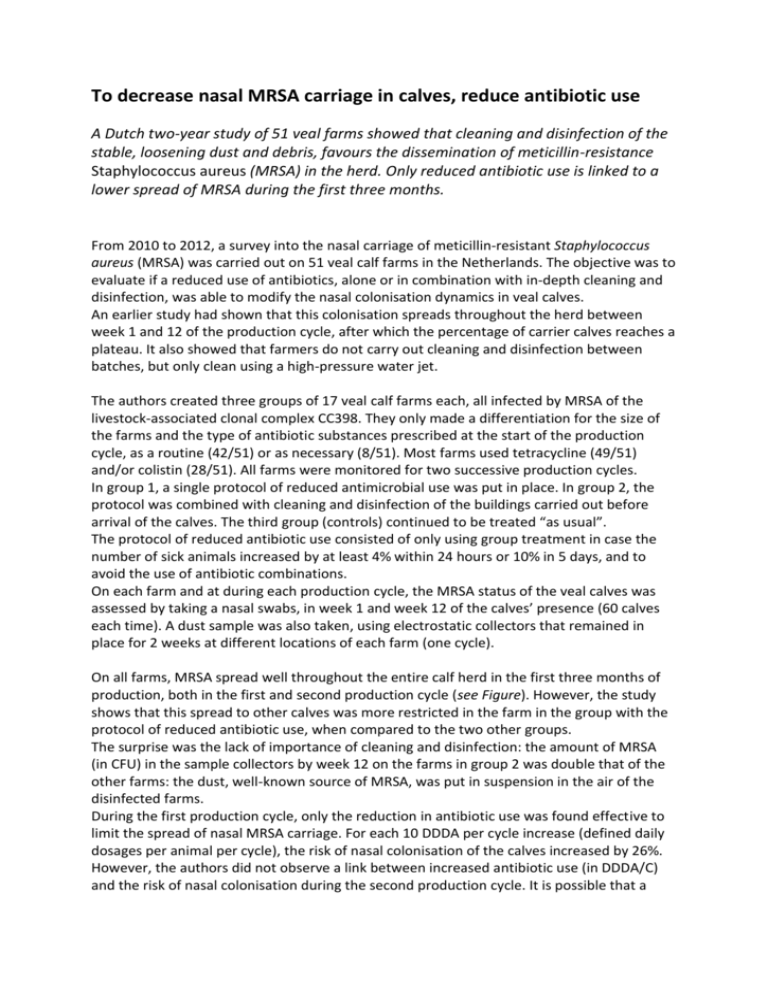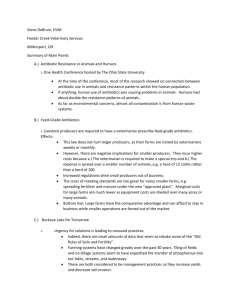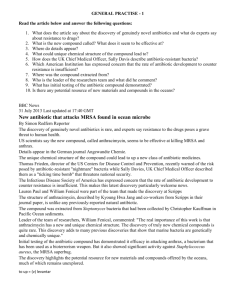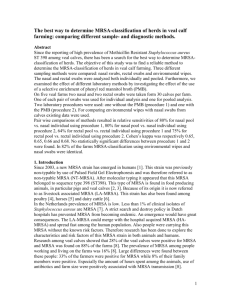Cevolution 2015T3_07_To decrease nasal MRSA carriage in calves
advertisement

To decrease nasal MRSA carriage in calves, reduce antibiotic use A Dutch two-year study of 51 veal farms showed that cleaning and disinfection of the stable, loosening dust and debris, favours the dissemination of meticillin-resistance Staphylococcus aureus (MRSA) in the herd. Only reduced antibiotic use is linked to a lower spread of MRSA during the first three months. From 2010 to 2012, a survey into the nasal carriage of meticillin-resistant Staphylococcus aureus (MRSA) was carried out on 51 veal calf farms in the Netherlands. The objective was to evaluate if a reduced use of antibiotics, alone or in combination with in-depth cleaning and disinfection, was able to modify the nasal colonisation dynamics in veal calves. An earlier study had shown that this colonisation spreads throughout the herd between week 1 and 12 of the production cycle, after which the percentage of carrier calves reaches a plateau. It also showed that farmers do not carry out cleaning and disinfection between batches, but only clean using a high-pressure water jet. The authors created three groups of 17 veal calf farms each, all infected by MRSA of the livestock-associated clonal complex CC398. They only made a differentiation for the size of the farms and the type of antibiotic substances prescribed at the start of the production cycle, as a routine (42/51) or as necessary (8/51). Most farms used tetracycline (49/51) and/or colistin (28/51). All farms were monitored for two successive production cycles. In group 1, a single protocol of reduced antimicrobial use was put in place. In group 2, the protocol was combined with cleaning and disinfection of the buildings carried out before arrival of the calves. The third group (controls) continued to be treated “as usual”. The protocol of reduced antibiotic use consisted of only using group treatment in case the number of sick animals increased by at least 4% within 24 hours or 10% in 5 days, and to avoid the use of antibiotic combinations. On each farm and at during each production cycle, the MRSA status of the veal calves was assessed by taking a nasal swabs, in week 1 and week 12 of the calves’ presence (60 calves each time). A dust sample was also taken, using electrostatic collectors that remained in place for 2 weeks at different locations of each farm (one cycle). On all farms, MRSA spread well throughout the entire calf herd in the first three months of production, both in the first and second production cycle (see Figure). However, the study shows that this spread to other calves was more restricted in the farm in the group with the protocol of reduced antibiotic use, when compared to the two other groups. The surprise was the lack of importance of cleaning and disinfection: the amount of MRSA (in CFU) in the sample collectors by week 12 on the farms in group 2 was double that of the other farms: the dust, well-known source of MRSA, was put in suspension in the air of the disinfected farms. During the first production cycle, only the reduction in antibiotic use was found effective to limit the spread of nasal MRSA carriage. For each 10 DDDA per cycle increase (defined daily dosages per animal per cycle), the risk of nasal colonisation of the calves increased by 26%. However, the authors did not observe a link between increased antibiotic use (in DDDA/C) and the risk of nasal colonisation during the second production cycle. It is possible that a longer follow-up (for a further 2-3 cycles) would have allowed an observation in favour of systematic cleaning and disinfection. But at this stage of the study, the conclusion inclines towards a strict application of the reduced use protocol – which is also in line with the objectives of the veal calf sector – and the Dutch government. Figure: Evolution of the percentage of veal calves carriers of nasal MRSA Group 1: reduced antibiotic use. Group 2: reduced antibiotic use + cleaning & disinfection. Control group: no change. Source: Dorado-Garcia A et al. Effects of Reducing Antimicrobial Use and Applying a Cleaning and Disinfection Program in Veal Calf Farming: Experiences from an Intervention Study to Control Livestock-Associated MRSA. PLoS ONE, 2015, vol. 10, n° 8, p. e0135826. http://www.plosone.org/article/fetchObject.action?uri=info:doi/10.1371/journal.pone.0135 826&representation=PDF






